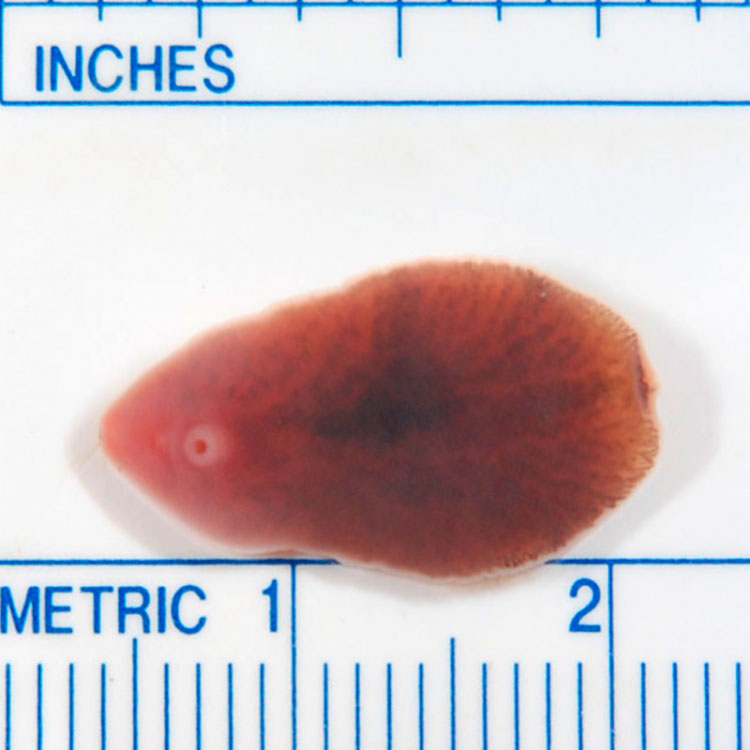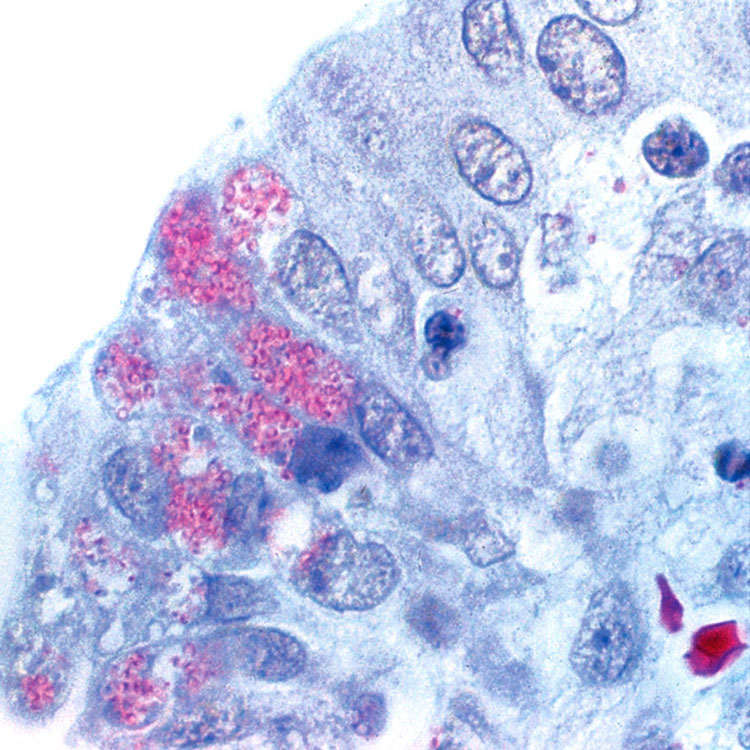Usually protozoan ( Microsporidia, Cryptosporidia ) or helminth (liver fluke, schistosomiasis, ascariasis)
Etiology/Pathogenesis
•
Cryptosporidium species
Clinical Issues
•
Protozoal infection usually seen in context of AIDS (AIDS cholangiopathy)

Can mimic primary sclerosing cholangitis radiographically
•
Helminths present with fever, right upper quadrant pain, signs of biliary obstruction
•
Gradual and regular stenosis of common bile duct with dilation of intrahepatic bile ducts
•
Prognosis depends on specific infection and status of host

Sequelae of
Clonorchis,
Opisthorchis infection include cholangiocarcinoma, Oriental cholangiohepatitis
Macroscopic
•
Clonorchis,
Opisthorchis,
Fasciola : Variably present dilation of intrahepatic ducts, with mural thickening

Worms often visible to naked eye
•
Ascaris : Large worms easily visible to naked eye
•
Schistosoma: Fibrosis of bile ducts
•
Protozoa: Cholangiopathy/stenosis of common bile duct
Microscopic
•
Protozoa: Epithelial disarray, lymphocytic inflammation, organisms in epithelium
•
Flukes: Inflammation of ducts with fibrosis, reactive epithelial changes

Liver Fluke
Liver flukes are flat, somewhat transparent, and tapered anteriorly. They have prominent oral and ventral suckers. (Courtesy J. Doss, MD.)

Schistosomiasis
Rarely, calcified schistosomal eggs  are seen in the periductal connective tissue.
are seen in the periductal connective tissue. 
Microsporidia
High-power view of Microsporidia infection in the biliary tree shows the red spores within the cytoplasm of the epithelial cells. 
Cryptosporidiosis
Cryptosporidia are round, basophilic protozoa with a unique location within the apical cytoplasm of epithelial cells.
TERMINOLOGY
Definitions
•
Infection of bile ducts by parasite
ETIOLOGY/PATHOGENESIS
Protozoans
•
Cryptosporidium,
Microsporidia,
Cystoisospora species
Helminths
•
Trematodes

Liver flukes
–
Clonorchis sinensis,
Opisthorchis species,
Fasciola species
 Schistosoma
Schistosoma species (blood flukes)






 are seen in the periductal connective tissue.
are seen in the periductal connective tissue.






